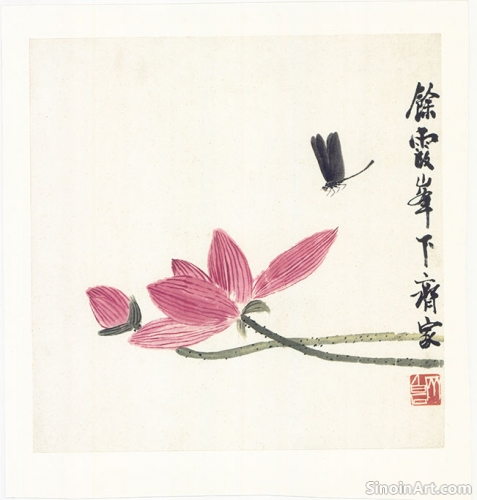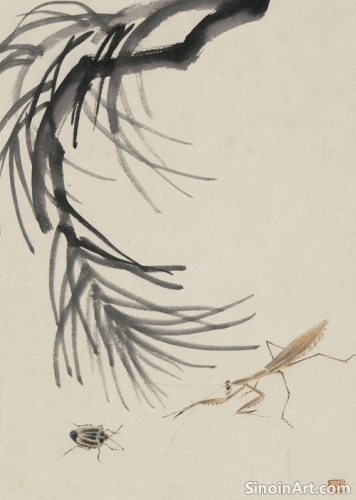The Concept of "Baimiao" and its Relationship to Xieyi
|
"Baimiao" (白描), often translated as "plain drawing" or "outline drawing," is a foundational technique in Chinese painting, characterized by the use of simple, unadorned lines to depict the contours and forms of a subject. While seemingly different from the expressive washes of Xieyi, Baimiao plays a crucial role in shaping its underlying structure and approach to form. It is a foundational technique that often informs the artist’s style.  Baimiao emphasizes the precision and control of the brush, requiring a mastery of line drawing to accurately represent the shape and essential structure of a subject. It’s not about capturing every detail but about capturing the essential lines of the form. The training in Baimiao often shapes the overall style of the artist.  While Xieyi often uses washes and spontaneous strokes, the underlying understanding of form that is developed through Baimiao is essential for creating effective compositions. Even when the lines are less prominent in the finished work, they inform the way that the painting is structured. It provides a blueprint for the final form.  Many Xieyi artists incorporate elements of Baimiao into their work, using simple outlines to define certain elements or as a starting point for more expressive brushstrokes. The Baimiao lines can often be seen in the initial stages of the art process, or they can be strategically placed within the finished work. It serves as the foundation for creative development. The discipline and precision required in Baimiao contribute to the overall control and confidence that are evident in skilled Xieyi paintings. The practice of Baimiao also helps to refine the artist’s eye and hone their ability to capture essential forms. It is a technique that builds a foundation for future expressivity. |
Tag : Baimiao, plain drawing, Chinese outline, Xieyi form, foundational technique
Related information
- The Significance of Composition in Xieyi
- The Legacy and Future of Xieyi Painting
- Xieyi Painting and its Global Influence
- Xieyi Painting and the Depiction of Mountains
- Learning Xieyi: Pathways to Expressive Mastery
Composition, including the strategic use of negative space, asymmetrical balance, and flowing lines, is vital in Xieyi painting, guiding the viewer's eye, creating a sense of harmony, and supporting the artist's intention, despite the art form's seemingly spontaneous nature.
Xieyi painting, with its rich history and unique aesthetic, continues to hold significance and inspire artists, influencing contemporary art globally, ensuring the continuation of its traditions, and its continued evolution and relevance as it continues to express cultural values and universal truths, making it an enduring art form.
Xieyi painting has influenced artists and art movements globally through its emphasis on spontaneity, expression, and suggestion, with its impact seen in abstract expressionism and many contemporary approaches to the application of ink, form, and the expressive potential of line, reflecting its enduring power and universal appeal.
Mountains in Xieyi are depicted through washes and suggestive strokes to capture their grandeur, scale, texture, and symbolic connection to stability, timelessness, and the human-nature relationship, reflecting the artist's emotional response to their beauty, power, and mystery.
This article provides an overview of the pathways for aspiring Xieyi artists, including formal education, private instruction, online resources, and the importance of regular practice and dedication to achieving mastery.